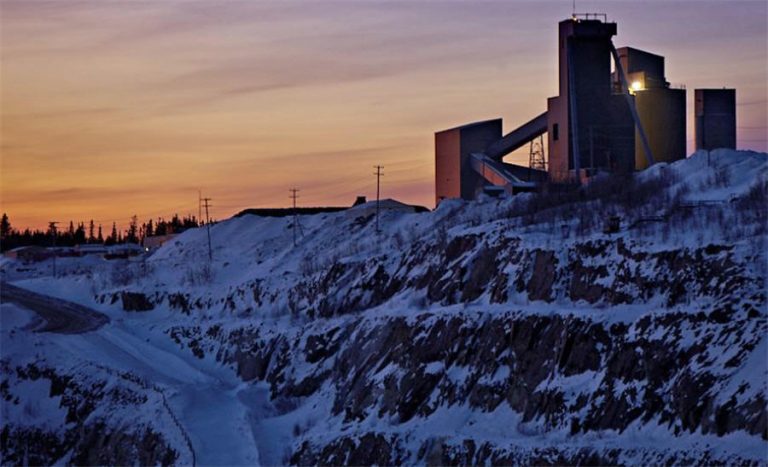Iamgold grows cash balance, adjusts Westwood reserve

After pre-releasing 2020 production of 653,000 oz. in January, gold miner Iamgold (TSX: IMG; NYSE: IAG) has released 2020 financial results. All-in sustaining costs for the year came in at $1,232 per oz., leading to revenues of $1.2 billion and mine site free cash flow of $223.2 million, a 280% increase over the year prior. Gross profit of $250.3 million recorded for 2020 also represents a 260% increase over 2019.
Iamgold closed out the year with $986.1 million of cash, cash equivalents, short term investments and restricted cash, which is a $121.3 million increase over the prior year. A further $498.3 million was available under the company’s credit facility.
This year, the producer expects to produce 630,000 to 700,000 gold oz., at AISCs of $1,230 to $1,280 per oz. The Essakane open pit in Burkina Faso is expected to contribute 365,000 to 390,000 oz., with 220,000 to 245,000 oz. anticipated from the Rosebel mine in Suriname and 45,000 to 65,000 oz. expected from the Westwood underground operation in Quebec.
“Iamgold’s efforts in advancing our peer-leading growth platform took a significant step forward in 2020 with the commencement of construction of the Côté gold project in Canada, supported by both robust gold prices and nearly $1.5 billion in liquidity at year-end. As reported on January 19, 2021, Iamgold achieved its updated production and cost guidance, generating $347.6 million in annual operating cash flows and producing 653,000 oz. of gold, resulting in $223.2 million in mine-site free cash flows,” Gordon Stothart, president and CEO of Iamgold, said in a release.
Looking at growth, as of year-end, detailed engineering for Iamgold’s 64.75%-held Cote gold project in northern Ontario was 73% complete with approximately 45% of the planned total expenses committed. Earthworks have started at the site.
This year, the company expects to spend $590 million on development and expansion capital, with $355 million of this total dedicated to Cote. A mill upgrade is also expected to be completed in the first quarter at Essakane, where $90 million is dedicated to growth. Additional engineering and project development work is ongoing for the Boto gold project in Senegal.
Global reserve numbers down
In addition to the financial results, Iamgold provided a company-wide resource and reserve update. Headline proven and probable reserves across the operations decreased by 2.8 million oz., or 17%, from 2019 to a total of 13.9 million oz. This decrease is driven by the December 2020 sale of the Sadiola mine in Mali, mine depletion at the operations and an August 2020 reserve reclassification at Westwood.
For the Quebec mine, in August, Iamgold released the results of an updated feasibility study that incorporates modified mining methods and operational assumptions, based on operating experience.
Headline proven and probable reserves across the operations decreased by 2.8 million oz, or 17%, from 2019
While the August update cut total reserves to 2.7 million tonnes at 7.1 g/t gold, for a total of 618,000 oz. (compared to 5.3 million tonnes at 7 g/t gold containing 1.2 million oz. at year-end 2019), the 2020 year-end reserve figures suggest an additional drop in grade. The latest release quotes Westwood reserves of 4 million tonnes at 4.9 g/t gold, for a total of 626,000 oz., a 47% decrease over the prior year-end. There are no major changes to year-end resources.
In November, Iamgold reported a seismic event at Westwood – operations restarted within a few days. Work is ongoing on converting the resources to reserves.
In a note to investors, Jackie Przybylowski of BMO Capital Markets notes that while the fourth-quarter results did not “include many surprises”, “the most significant update is a decrease to Westwood reserves in the company’s annual reserve and resource update.”
In the note, the mining analyst notes upside potential at the site with additional work being done to “evaluate the potential development of the Fayolle deposit, which may provide incremental feed to the Westwood mill as early as Q4/22. This ‘hub-and-spoke’ model would represent additional upside to our estimates.”
In the meantime, Przybylowski has lowered her target price for the shares to C$4, with an unchanged ‘market perform’ rating.
(This article first appeared in the Canadian Mining Journal)
More News
Anglo starts talks with banks on possible De Beers IPO
Anglo is pursuing a dual-track process in its effort to exit De Beers by trying to find a buyer for the struggling business.
March 28, 2025 | 12:19 pm
PDAC JV video: Golden Pursuit preps for discovery at sub-Arctic Gordon Lake, CEO says
A program to scan archived core using AI and expand geophysical surveys on the Wooferine-Lynk Zones is set to start soon.
March 28, 2025 | 11:35 am
{{ commodity.name }}
{{ post.title }}
{{ post.excerpt }}
{{ post.date }}



Comments